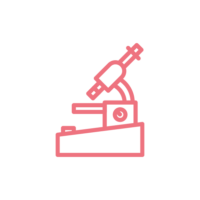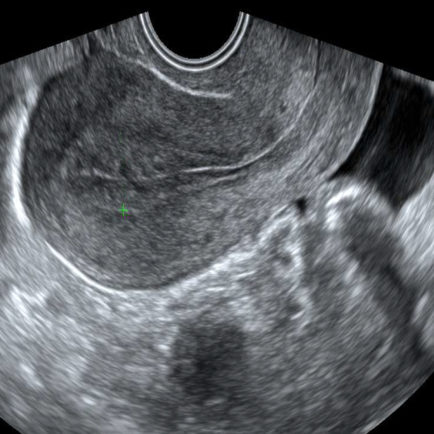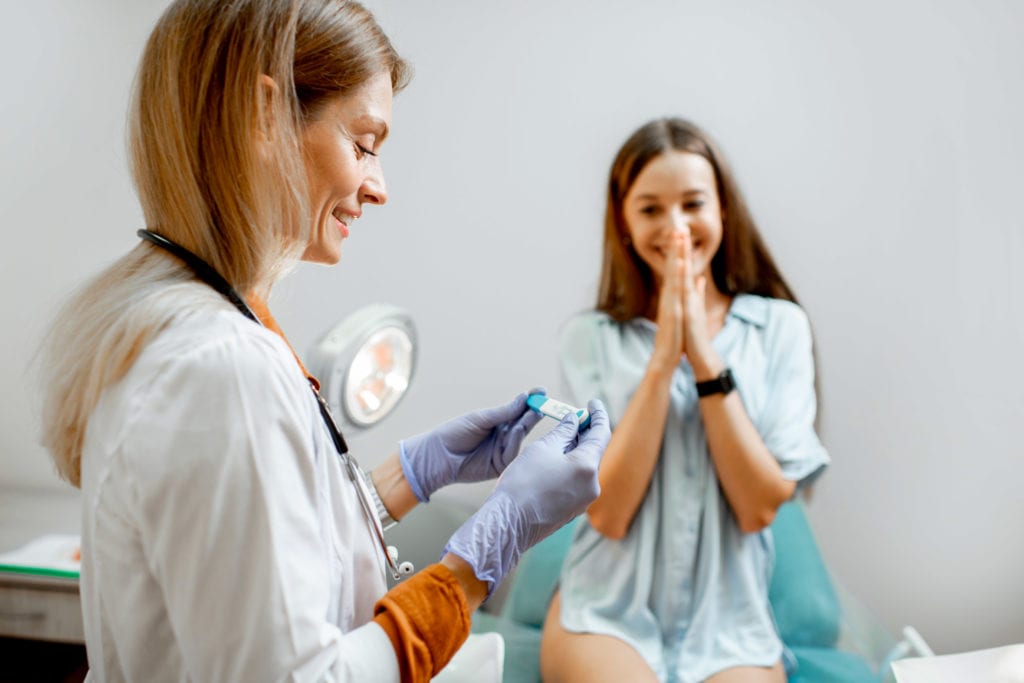EGG DONATION:
IVF with donor eggs

WHAT DOES THE EGG DONATION INVOLVE: IVF with donor eggs?
Egg donation is the process of In Vitro Fertilization that consists of uniting the eggs of a donor and the sperm of the recipient couple, in the case of having it, with the option of using a sperm bank otherwise.
Thus, the woman will be able to gestate an embryo by herself and have a baby, which otherwise she could not. As in the other IVF modalities, it can be accompanied by other laboratory techniques that enrich it, such as: MACS, FERTILE, embryo freezing, preimplantation diagnosis, etc.
The current legal framework in this country, legislates the donation of eggs as an act of solidarity, anonymous, altruistic and voluntary in which a young woman, the donor, woman eggs to a woman or couple recipient, so that it can have the opportunity to generate their own child and enjoy motherhood.
- We look for the donor that best suits you, in a special and personalized way.
- All the eggs from your donor are exclusively for you, we do not share them.
- We do a complete genetic compatibility study with recessive diseases.

WHEN IS IT USED?
- Premature ovarian failure: menstruation does not occur at puberty (gonadal dysgenesis, Turner’s syndrome, Savage’s syndrome, Swyer’s syndrome)
- Premature Ovarian Failure (P.O.F.): absence of ovarian function before age 40
- Menopause
- Ovarian reserve limit
- Advanced maternal age
- Female hereditary diseases transmissible to offspring that cannot be detected by Preimplantation Genetic Diagnosis techniques
- Repeated IVF failures with own eggs
- Severe endometriosis
- Repeat abortions
- Previous chemotherapy or radiotherapy treatments
- Environmental factors (smoking, alcoholism, anorexia, etc)
THE MOST COMPLETE AND STRICT SELECTION OF THE DONOR
After receiving detailed and complete information of the procedure, the donors, freely, voluntarily and anonymously, are submitted to a strict and rigorous study protocol to guarantee, according to the knowledge of science and techniques existing at the time of its realization, that they do not suffer from psychological, genetic or infectious diseases transmissible to their descendants.

LEGAL FRAMEWORK
The selection of the donor is a very strict and perfectly regulated procedure. The legislation states that donors must be over 18 years old, as well as have a good state of psychophysical health and full capacity to act.

COMPLETE PSYCHOLOGICAL EVALUATION
Prior to the first visit, all donor candidates are thoroughly evaluated by our psychology unit following the corresponding protocols.

MEDICAL HISTORY
During the first visit our medical team performs an analysis of physical characteristics: race, height and weight (BMI), eye color, hair color and texture, skin color. Checking personal and family history with no genetic or infectious diseases transmissible to offspring.

GYNECOLOGICAL EXAMINATION
A complete gynecological examination is performed, the normality of the reproductive system is checked (physical examination, ultrasound scan, vaginal cultures) and the adequate response to the ovarian stimulation treatment (fertile potential).

MEDICAL TESTS
Subsequently, tests are performed to determine blood group and Rh factor and a complete blood test: negative for HIV, Hepatitis B, Hepatitis C and Syphilis, hemogram, coagulation and biochemistry.

GENETIC TEST
Genetic study with karyotype and study of carriers of recessive diseases with the possibility of extended genetic matching.
STAGES OF EGG DONATION

STAGES OF EGG DONATION


FIRST VISIT
As in all treatments that take place at Embriogyn, the first step is to make a first visit. In this visit with one of our fertility gynecologists, a thorough study of the medical and reproductive history will be performed. That is why it is important to bring, in case you have it, all the information related to the reproductive history prior to the consultation. In addition to a complete gynecological study, a study of the semen will be indicated, in the case of the couple, in order to make the most detailed and personalized diagnosis possible.
ENDOMETRIUM PREPARATION
The recipient woman has to do a treatment to prepare the endometrium prior to the embryo transfer. The donor and the recipient are prepared in a parallel way in cases where the egg donation is done fresh. If frozen eggs are used, the recipient can decide when to begin the process. The preparation of the recipient consists of taking medication for 10 days to prepare the endometrium and thus increase the possibilities of implantation. The correct evolution of this stimulation will be marked by ultrasound and blood tests.

IVF LAB
Identification and collection of the eggs
The follicular liquids obtained in the puncture are taken to the In Vitro Fertilization Laboratory where all the eggs are located and collected at the same time as the gynecologist is performing the extraction of the eggs. These are placed on plates with an appropriate culture medium, duly identified and numbered within the incubator. This is one of the entry points for the control of the traceability of the eggs which is controlled by the Witness security system. The incubators keep them in an adequate environment in terms of temperature, humidity, proportion and gas purity.
Semen Preparation
In the Andrology Laboratory, the sperm sample will be processed with the most appropriate spermatozoa training technique, depending on the quality, which allows us to select and isolate the spermatozoa with the best motility, morphology and/or the lowest DNA fragmentation rate. This is the other entry point for sperm traceability control, which is controlled by the Witness system.
Fertilization Technique
The next step is to facilitate the fertilization of the eggs and sperm. There are mainly two methods to facilitate fertilization:
Conventional Fertilization: is the procedure by which the eggs that are still inside the cluster (group of cells that surround the egg) are placed in the same medium with the sperm, previously treated with the intention of carrying out the fertilization spontaneously. To perform this technique, a minimum concentration of spermatozoa with good mobility of 100,000 spermatozoa per milliliter per egg is required.
ICSI (Intra Cytoplasmic Sperm Injection): consists of directly introducing a spermatozoon into a mature egg by means of micromanipulation. Embriogyn’s teams, together with the high level of training and experience of our embryologists, allow us to achieve fertilization rates that are around 75% in most cases. Thanks to this technique, only one motile spermatozoon is needed for each mature egg. Therefore, this technique can be applied to sperm samples of very low quality.
Embryo culture, the EMBRYOSCOPE
The Embryoscope is a time-lapse culture system that provides continuous images of the embryos. Since 2011, Embriogyn has joined the revolution in reproductive medicine by applying this technology to all patients at the center, which has allowed us to improve gestation rates by about 15-20%.
The fertilized eggs, now embryos, are kept in culture in the Embryoscope incubator for 3-6 days before being placed back into the mother’s womb. This embryonic culture allows the development of the embryos in vitro and allows us to continuously evaluate the evolution of each one of them and to have the necessary information to choose the best ones to be transferred to the maternal uterus. This information provided by the Embryoscope is shared with our patients allowing each one to see their own embryos, thus providing confidence and transparency in the whole process being carried out in the In Vitro Fertilization laboratory, as well as a greater degree of knowledge and understanding of the evolution of the embryos.

EMBRYO TRANSFER
The ideal moment to return the embryos to the mother’s womb is decided in each particular case. Depending on many factors such as the characteristics of the embryos, the medical and reproductive history of the couple, the embryologist advises the most appropriate time of transfer (normally on the third or fifth day of embryonic development).
The transfer is a simple and painless procedure, which normally does not require anesthesia. With the help of a very thin catheter, the embryos are deposited in the bottom of the uterus. This process is controlled by abdominal ultrasound.
Currently, 1 or 2 embryos are transferred, in consensus with the couple and the medical council that evaluates the individual history of each case in order to obtain the highest probability of gestation while minimizing the risk of multiple pregnancy.
On some occasions, the transfer of fresh embryos may be discouraged for various reasons, so that all the embryos obtained in this treatment are frozen for later transfer in a cryotransfer process.
VITRIFICATION OF THE EMBRYOS
Once the transfer of the selected embryos has been carried out, the remaining embryos of good quality are frozen, in order to preserve their potential for later transfer.
The technique used for freezing the embryos is vitrification, which in women has very high survival rates and the same probability of pregnancy as fresh embryos.
Freezing embryos makes this a very good system of preserving fertility, although one must be very strict in freezing only those embryos that really have fertile potential to give real expectations to parents who later wish to make use of their frozen embryos.


PREGNANCY TEST AND ULTRASOUND
Once the technique has been completed, you will rest for a few minutes, we will give you the instructions to follow and we will set a date to do the pregnancy test with the first urine in the morning approximately 14 days after the extraction of the eggs. During this period, we recommend living a completely normal life, maintaining your usual routines and avoiding only high intensity efforts. We will also give you some guidelines to reduce the stress of waiting and transform it into a positive attitude to live it as naturally as possible.
Three weeks after the positive result, an ultrasound scan will be performed to check the viability of the pregnancy. This ultrasound scan is performed in the 6-7 week of pregnancy, where the gestational sac and yolk sac of the embryo can be seen already with a heartbeat. From then on this gestation is like any other and requires the normal follow-up and controls of a pregnancy and together we can celebrate the success!
SUCCESS RATES
Pregnancy by ovodonation: donor eggs
EGG DONATION
Cumulative pregnancy rate per cycle.
The accumulated pregnancy rate per cycle corresponds to the probability of achieving a pregnancy in a single cycle or attempt, taking into account the transfer to the maternal uterus of all the embryos generated in that cycle, whether fresh or frozen.
ALL THE DONOR’S EGGS ARE FOR YOU
- Case study and orientation
- Hormone tests during the cycle
- Medical visits and hormonal stimulation controls
- Clinical study and selection of the donor by the specialized team
- Donor follicular puncture
- IVF lab processes
- Andrology lab processes
- ICSI (Intracytoplasmic Sperm Injection)/IVF
- Embryo culture with Embryoscope technology
- Embryo Transfer
-
B-HCG pregnancy test
-
Ultrasound to verify pregnancy
- Witness system of security and traceability of biological samples
FRESH EGG DONATION: EUR 7717
VITRIFIED EGG DONATION: EUR 5955
MAKE AN APPOINTMENT
It’s quite simple. All you have to do is contact Embriogyn and make an appointment with our specialists at the time that suits you best. In case you can’t come in person to the clinic, visits can also be arranged via Skype.
